The Far Western Nepal Travel Guide invites travelers to explore a unique part of Nepal. This region offers breathtaking landscapes and rich culture. Visitors find plenty of places to visit in Far Western Nepal that amaze. From serene lakes to historical sites, the region is diverse. The culture and traditions from different ethnic groups are found here. Every trip promises a deep connection with nature and people.
The Far Western Nepal Travel Guide helps you navigate these wonders easily. It makes your travel planning smooth and enjoyable. The region hosts major attractions in Far West Nepal that are less crowded but truly special. National parks in Far Western Nepal protect rare animals and vibrant ecosystems. You can hike through forests, spot wildlife, and breathe fresh mountain air. Places to visit in Far Western Nepal include hidden gems that only locals know. The natural beauty of the region captures every visitor’s heart.
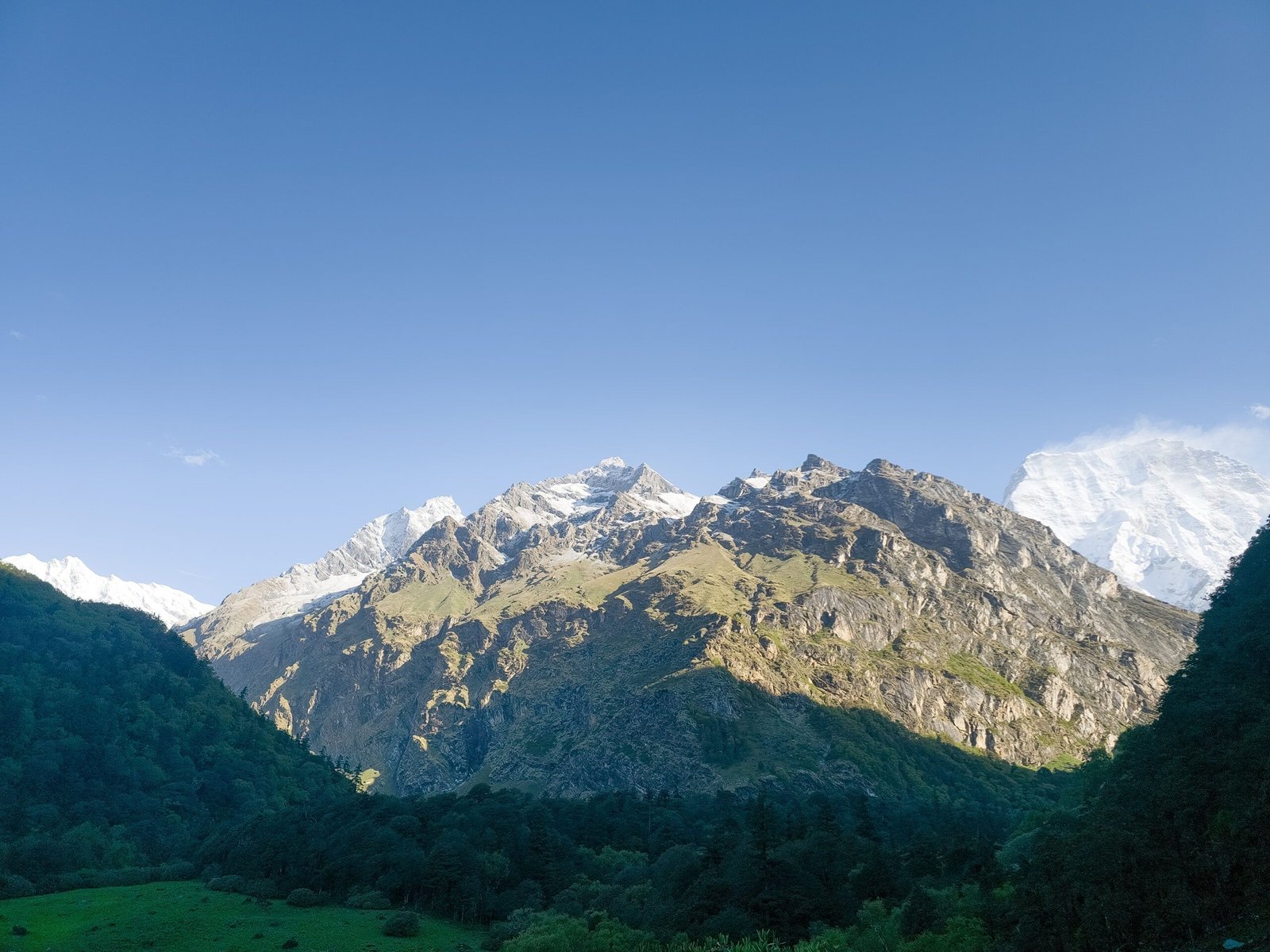
This guide introduces the best spots and unique cultural experiences. Each destination has a story that enriches your journey. Following the Far Western Nepal Travel Guide ensures you don’t miss anything important. Exploring cultures of Far Western Nepal reveals a fascinating mix of traditions. Different ethnic groups live peacefully, sharing festivals and customs.
Geography of Far Western Nepal shapes lifestyles, with mountains, hills, and plains. Local people warmly welcome travelers and share their heritage. Travel tips for Far West Nepal help you understand local practices. You learn to respect traditions while enjoying adventure and nature. This Far Western Nepal Travel Guide is your key to an authentic experience.
Geography of Far Western Region
The Far Western Nepal Travel Guide highlights the region’s different geography. This area spans from flat plains to high mountain ranges. The terrain varies greatly, offering hills, valleys, and rugged mountains. The region’s geography shapes its culture and life deeply. You’ll find broad river basins that support tilling communities.
The advanced mountain areas attract climbers and nature addicts. Geography of Far Western Nepal creates numerous unique ecosystems. This diversity makes it a fascinating place to explore. The rainfall in Far Western Nepal changes with altitude and season. Summers bring warm temperatures and heavy thunderstorm rains. Winters can get veritably cold, especially in advanced elevations. The Terai plains stay warmer time- round with milder layoffs. Spring and afterlife offer the stylish rainfall for trip with clear skies.
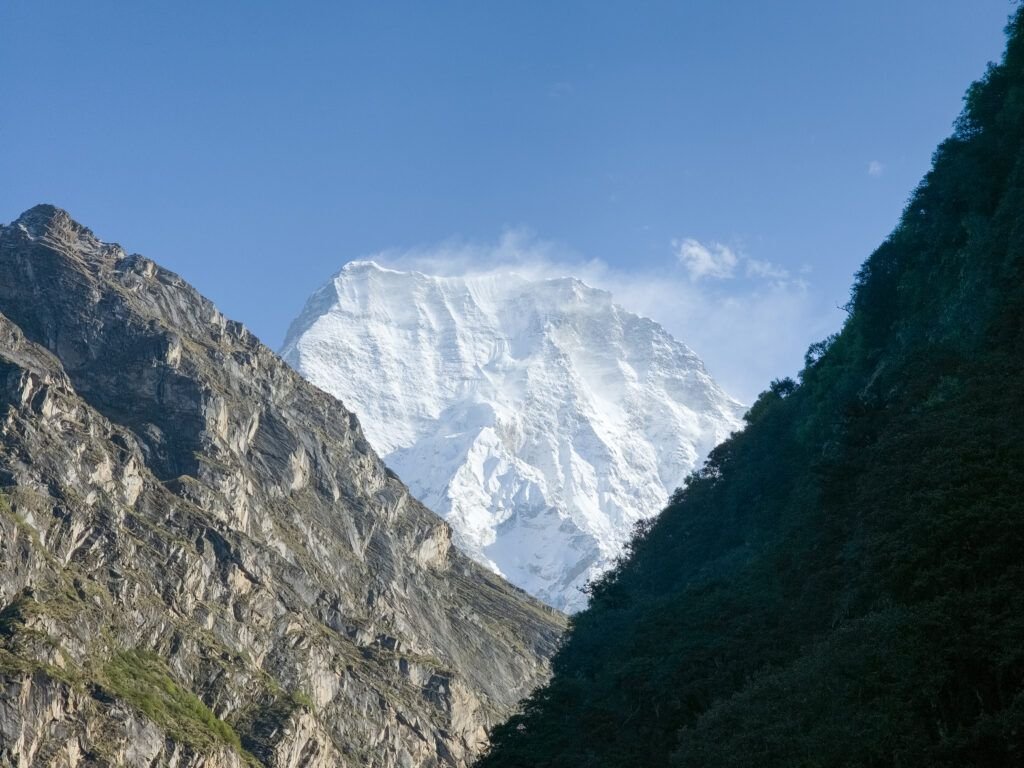
Seasonal changes impact husbandry and original carnivals then. Major climate conditioning like showers affect diurnal life and trip plans. trippers should plan according to these rainfall patterns. The Far Western Nepal Travel Guide helps you choose the stylish time to visit. This region divides into three main zones Terai, Hills, and Mountains. Each zone offers different gests for callers. Terai features flat lands and lush timbers with rich wildlife.
Hills give terraced granges and traditional townlets to explore. Mountain zones show stirring peaks and alpine meadows. National premises in Far Western Nepal cover numerous of these geographies. The region’s terrain supports varied foliage and fauna. Understanding the land helps trippers appreciate its natural beauty. This companion gives you perceptivity into what to anticipate geographically.
Location of Far Western Region
The Far Western Nepal Travel Guide shows how to reach this remote and beautiful region. Most travelers begin their journey from Kathmandu, Nepal’s capital city. From Kathmandu, you can fly to Dhangadhi Airport, the main gateway in the Far Western Region. Domestic flights operate regularly and take about one hour. Alternatively, you can take a long bus ride from Kathmandu, but it may take over 24 hours. Many buses travel through scenic highways passing hills and plains.
After reaching Dhangadhi, you can explore nearby cities like Mahendranagar by road. Local transport like buses, jeeps, and taxis connect smaller towns and tourist spots easily. For travelers coming from India, the Far Western Region shares borders with Indian states like Uttarakhand. Border crossings at Banbasa and Mahendranagar allow easy access for Indian visitors. Roads from the border lead directly into major towns in the region. However, visitors must carry valid documents and check for any travel permits.
The road network in Far Western Nepal is improving but some routes remain rough. During the monsoon, travel in these regions can become challenging due to landslides. The Far Western Nepal Travel Guide provides useful tips on routes and transport options. Once you reach major cities like Dhangadhi or Dadeldhura, you can explore deeper places to visit in Far Western Nepal. Many popular destinations lie off the main roads, requiring local guides or private vehicles.
Trekking is popular in mountain areas where roads do not reach. Some national parks have entrance points accessible only by walking or jeep safaris. Staying flexible with travel plans lets you discover hidden gems in Western Nepal. Remember to respect local customs and communities along the way. This region offers adventure, culture, and nature for every traveler.
Major Attractions in Far Western Region Nepal
1. Far Western Nepal Travel : Rara Lake
Rara Lake stands as the largest lake in Nepal and the crown jewel of the Far Western Nepal Travel Guide. It lies within Rara National Park, surrounded by dense forests and snow-capped peaks. Visitors find peaceful waters reflecting the sky, perfect for photography and relaxation. The lake’s clear blue waters attract nature lovers and adventurers alike. Places to visit in Far Western Nepal cannot be complete without experiencing this serene spot. The park also offers trekking trails that connect to local villages and wildlife habitats. Geography of Far Western Nepal contributes to Rara’s unique alpine climate and landscape. The lake represents one of the most beautiful hidden gems in Western Nepal.
Rara National Park protects a diverse range of wildlife, making it a highlight among national parks in Far Western Nepal. You might see red pandas, musk deer, and rare birds during your visit. The park’s flora includes rhododendrons and pine forests, adding vibrant colors in spring.
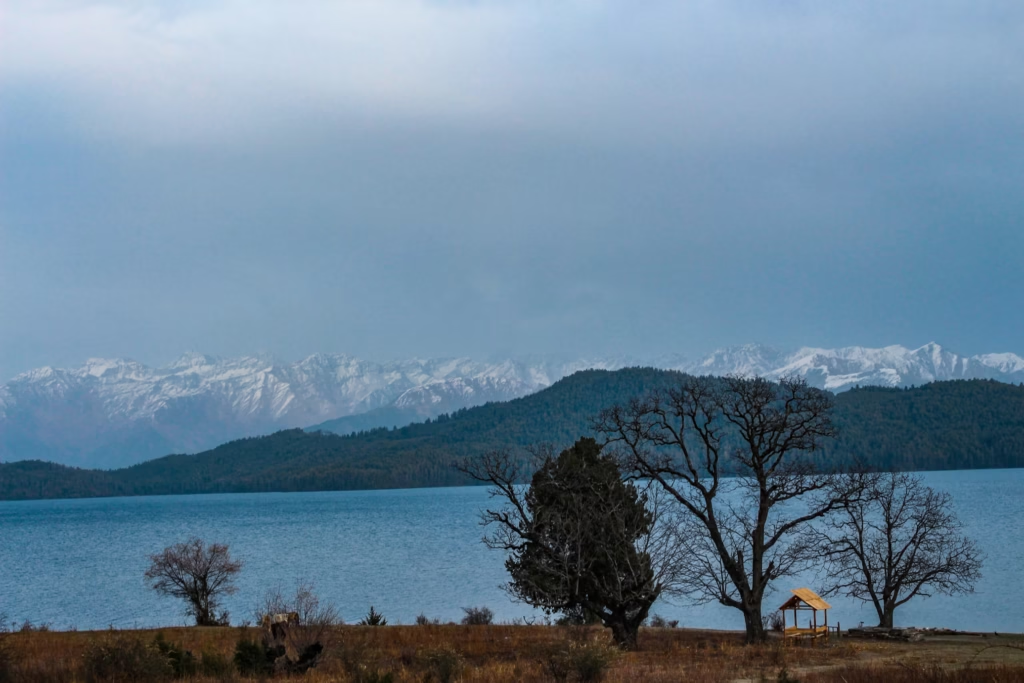
The remote location helps keep this area pristine and less crowded. Travelers following the Far Western Nepal Travel Guide will appreciate its untouched beauty. The park also supports local ethnic groups in Far Western Nepal who live sustainably. Understanding the cultures of Far Western Nepal enhances the experience of visiting Rara Lake. This attraction combines natural beauty with cultural richness perfectly.
The best time to visit Rara Lake is during spring and autumn when weather is clear and mild. Travel tips for Far West Nepal suggest carrying warm clothes due to the cool mountain air. The lake area has basic lodging options but no large hotels, preserving its natural feel. You can rent boats to explore the lake’s calm waters gently. Local guides offer insights into the lake’s history and environment. This spot embodies the peaceful and adventurous spirit that the Far Western Nepal Travel Guide promotes. Many consider it the crown jewel among major attractions in Far West Nepal. Rara Lake truly belongs among the must-see wonders of the region.
2. Far Western Nepal Travel : Khaptad National Park
Khaptad National Park is a sacred and ecological treasure in the Far Western Nepal Travel Guide. It spreads across high hills and offers panoramic views of the Himalayan range. The park is famous for the Khaptad Baba Ashram, a spiritual retreat attracting pilgrims and tourists. Places to visit in Far Western Nepal often include Khaptad for its mix of nature and spirituality. This area supports a rich diversity of flora and fauna unique to the region. The park hosts rare herbs and medicinal plants treasured by local ethnic groups in Far Western Nepal.
As one of the national parks in Far Western Nepal, Khaptad supports endangered animals such as Himalayan bears and musk deer. Birdwatchers can enjoy spotting rare species among the dense forests and meadows.
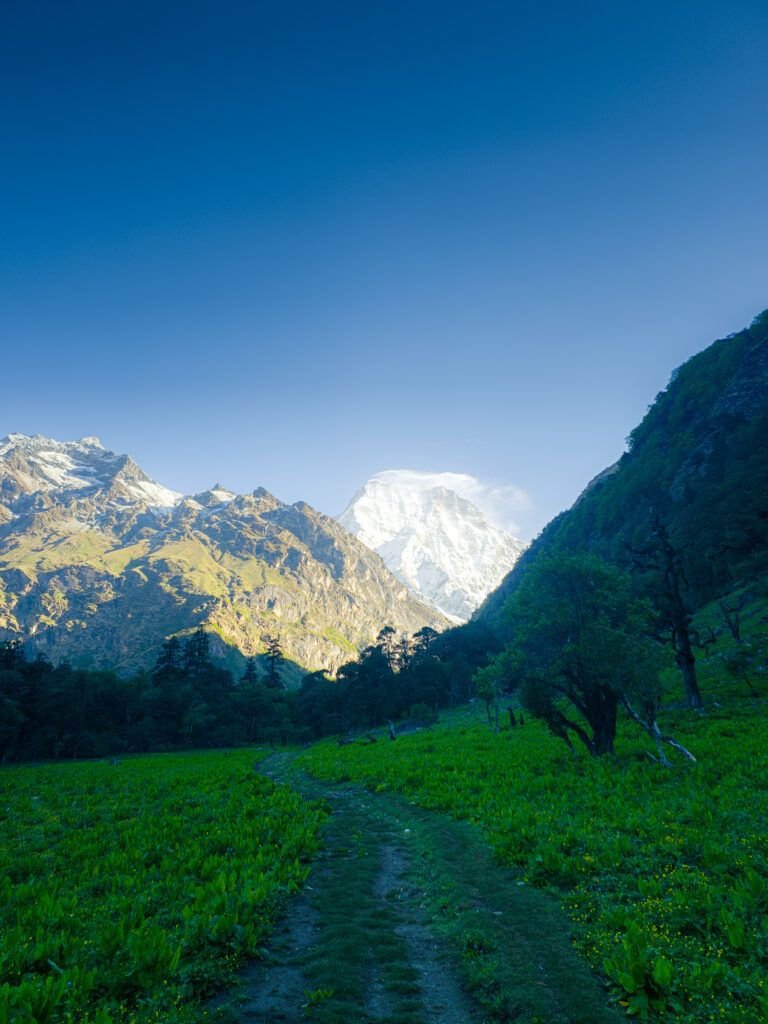
The park also plays a vital role in protecting the environment and local traditions. Ethnic groups in Far Western Nepal respect the sacred grounds and practice sustainable living here.
Travelers using the Far Western Nepal Travel Guide learn about the balance between ecology and culture in Khaptad. The park’s pristine condition reflects the strong community involvement in conservation. The combination of natural beauty and cultural heritage makes Khaptad a special destination. It stands out among major attractions in Far West Nepal.Visiting Khaptad National Park offers adventure with spirituality and a chance to learn local lifestyles. Travel tips for Far West Nepal recommend hiring local guides who know the best trekking routes.
The weather varies, with cold winters and pleasant summers ideal for hiking. Nearby villages give insight into the cultures of Far Western Nepal and their harmonious life with nature. The park’s location and geography of Far Western Nepal make it less crowded than other tourist spots. The Far Western Nepal Travel Guide highlights Khaptad as a must-see destination. Visitors leave with a renewed sense of peace and connection to the land. Khaptad National Park truly offers a unique, enriching experience.
3. Far Western Nepal Travel : Shuklaphanta Wildlife Reserve
Shuklaphanta Wildlife Reserve shines as a vibrant ecosystem and key attraction in the Far Western Nepal Travel Guide. It lies in the lowland Terai region, known for its grasslands and insane forests. This reserve shelters endangered species such as the Bengal tiger, one-horned rhinoceros, and swamp deer. Travelers are interested in places to visit in Far Western Nepal will find Shuklaphanta a wildlife lover’s a living heaven. The reserve plays a crucial role among national parks in Far Western Nepal for conservation. Geography of Far Western Nepal shapes the reserve’s warm climate and fertile plains. This area supports various ethnic groups in Far Western Nepal who live nearby and protect the forest.
Shuklaphanta stands out with its vast grasslands, attracting migratory birds and supporting diverse species. Birdwatchers can spot rare and colorful birds, adding excitement to their visit. Local communities have coexisted with the forest and wildlife for generations. The Far Western Nepal Travel Guide highlights the importance of these communities in conserving the reserve. Traveling here connects visitors to the cultures of Far Western Nepal and their respect for nature. The reserve’s success depends on balancing wildlife protection with human livelihood. This area remains a hidden gem in Western Nepal’s natural landscape. Visitors leave inspired by the richness of life here.
The best time to visit Shuklaphanta is from November to March when animals are easier to spot and climate is mild and calm. Travel tips for Far West Nepal suggest early morning safaris for the best wildlife sightings. The reserve offers simple accommodations and eco-friendly lodges. Visitors should follow park rules to protect animals and plants. The warm climate contrasts with Nepal’s mountainous regions, offering a different experience. The Far Western Nepal Travel Guide encourages exploring this unique natural treasure. Shuklaphanta Wildlife Reserve stands as one of the most exciting major attractions in Far West Nepal.
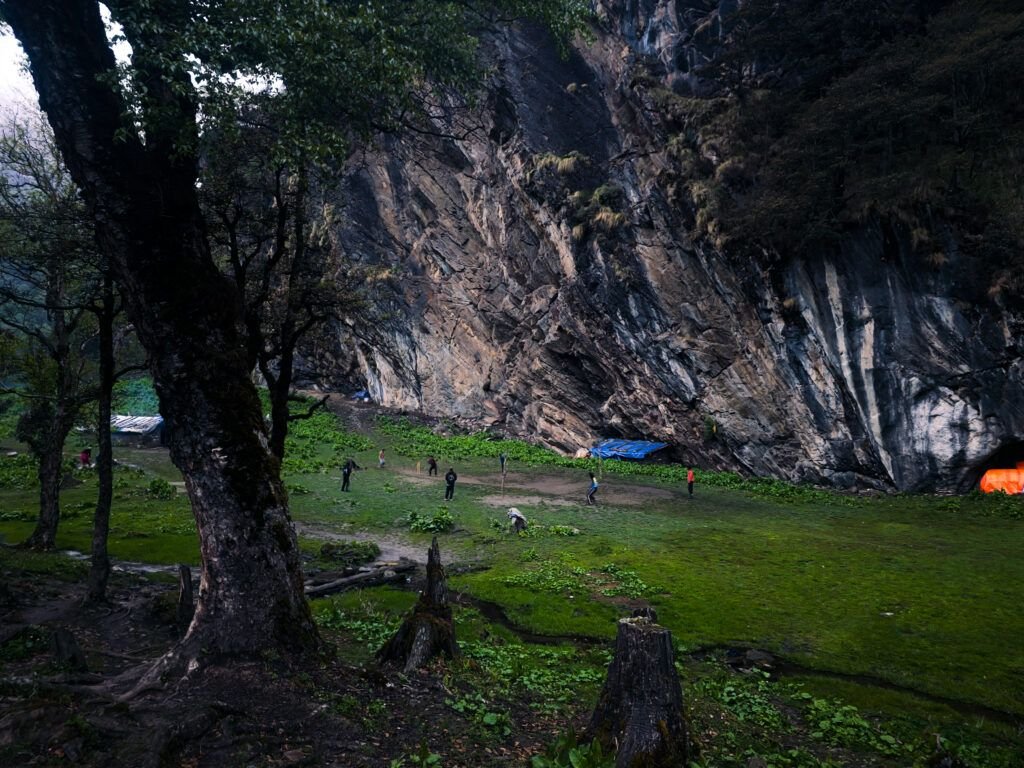
4. Far Western Nepal Travel : Baitadi
Baitadi is a historical and cultural hub featured in the Far Western Nepal Travel Guide. This district offers a peaceful and harmonious environment filled with ancient temples and local markets. Major attractions in Far West Nepal include the Durgamandau and Baitadi temples here. The district showcases the cultures of Far Western Nepal with vibrant festivals and traditional crafts. The geography of Far Western Nepal brings together hills and valleys that shape daily life. Travelers explore small villages and meet ethnic groups in Far Western Nepal who keep old traditions alive. Baitadi represents a blend of natural beauty and cultural heritage. It offers travelers a quiet escape from crowded tourist spots.
Baitadi’s temples hold religious importance and attract devotees throughout the year. The architecture and carvings reveal local artistry and devotion. The Far Western Nepal Travel Guide encourages visiting during festivals for an authentic experience. The region’s geography of Far Western Nepal creates mild weather, perfect for outdoor exploration. Visitors enjoy hiking and exploring local traditions firsthand. Ethnic groups in Far Western Nepal celebrate unique customs here with great pride. The district also offers insights into the history and evolution of Far Western Nepal. Baitadi is a place where culture and nature connect deeply.
Travelers to Baitadi find warm hospitality and simple lodging options. Travel tips for Far West Nepal suggest hiring local guides to discover hidden gems in Western Nepal. The local cuisine reflects the region’s cultures and natural resources. Baitadi’s quiet rivers and hills provide peaceful hiking trails. The Far Western Nepal Travel Guide highlights Baitadi as an important cultural destination. Visitors enjoy learning about the ethnic groups in Far Western Nepal through village tours. The balance of nature and tradition makes Baitadi memorable. This district is a vital part of the Far Western Nepal experience.
5. Far Western Nepal Travel : Ghodaghodi Lake
Ghodaghodi Lake offers tranquil beauty and rich biodiversity in the Far Western Nepal Travel Guide. The lake attracts birdwatchers and nature lovers seeking peace and wildlife sightings. Places to visit in Far Western Nepal must include this natural wonder. The lake supports various species and serves as a water source for nearby communities. The geography of Far Western Nepal gives the lake a subtropical climate with lush vegetation. The area also reflects the cultures of Far Western Nepal, with local communities living around the lake.
National parks in Far Western Nepal include Ghodaghodi Lake Complex, which preserves many aquatic and terrestrial species. Migratory birds flock here during winter, creating a vibrant and beautiful sounds. Local ethnic groups in Far Western Nepal celebrate festivals connected to the lake and its resources.
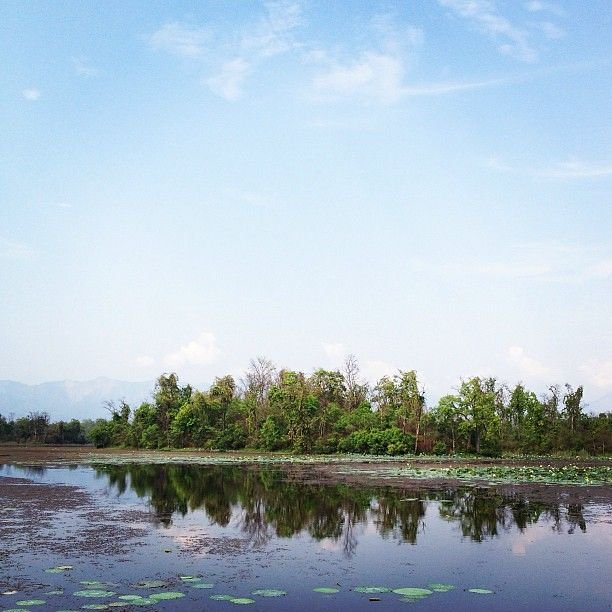
The Far Western Nepal Travel Guide emphasizes the importance of protecting this unique ecosystem. Visitors enjoy boat rides, walking trails, and observing wildlife in natural habitats. The lake’s calm environment invites relaxation and reflection. Geography of Far Western Nepal shapes this wetland’s rich flora and fauna. Ghodaghodi Lake stands as a peaceful escape and ecological treasure.
The best time to visit Ghodaghodi Lake is from October to March when migratory birds arrive. The lake area has simple guesthouses and community homestays. Visitors learn about local conservation efforts and cultural practices. This attraction enriches the Far Western Nepal Travel Guide with its unique blend of nature and culture. Many consider it a must-see for eco-tourists and birdwatchers alike. It remains one of the most beautiful spots in the Far Western Region.
Main Cities Far Western Region
1. Dhangadhi
Dhangadhi is the largest city in the Far Western Nepal Travel Guide. It serves as the commercial and administrative hub of the region. The city connects to other parts of Nepal through its airport and highways. Places to visit in Far Western Nepal often start here due to its facilities and services. Dhangadhi shows a blend of modern growth and traditional culture. Geography of Far Western Nepal shapes its flat plains and warm climate.
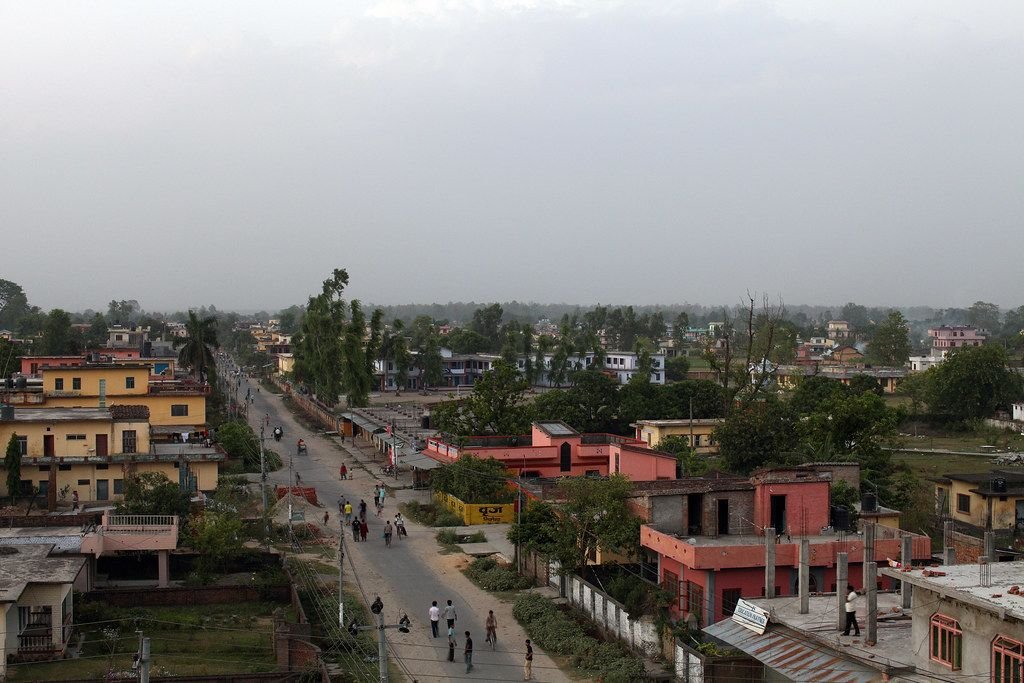
The city hosts diverse ethnic groups in Far Western Nepal who contribute to its vibrant culture. Local markets offer a mix of traditional goods and modern products. Travel tips for Far West Nepal highlight Dhangadhi as a convenient base for exploring nearby attractions. The city’s rapid development reflects the growing economy of the region. Dhangadhi’s mix of old and new offers a unique urban experience. It stands as a gateway to discovering hidden gems in Western Nepal.
2. Mahendranagar
Mahendranagar lies near the western border and plays a key role in cross-border trade. It is known for its peaceful neighborhoods and welcoming atmosphere. The city provides access to several major attractions in Far West Nepal. The local culture reflects the blend of Nepalese and Indian influences. Geography of Far Western Nepal here includes fertile plains and river valleys. The city is an important center for education and health services.
Ethnic groups in Far Western Nepal enrich Mahendranagar with festivals and traditions. The city also serves as a hub for travelers seeking national parks in Far Western Nepal. Travel tips for Far West Nepal recommend exploring Mahendranagar’s local cuisine and markets. It offers a relaxed urban environment compared to busier cities. The city plays a vital role in the region’s economy and culture. Mahendranagar connects travelers to many hidden gems in Western Nepal.
3. Dadeldhura
Dadeldhura is a hill city known for its scenic views and cool climate. It attracts visitors interested in both natural beauty and cultural experiences. The city offers access to several places to visit in Far Western Nepal. Local festivals and traditional crafts reflect the cultures of Far Western Nepal. Geography of Far Western Nepal gives Dadeldhura its hilly terrain and lush forests. The city remains a quiet spot for travelers looking to escape crowds.
Ethnic groups in Far Western Nepal have preserved their customs and lifestyle in Dadeldhura. Travel tips for Far West Nepal highlight the city’s easy access to trekking routes and nature walks. The peaceful environment encourages visitors to explore local villages. Dadeldhura represents the calm and authentic side of the region. Its natural surroundings provide great opportunities for photography and hiking. It stands out as a cultural and ecological gem.
4. Baitadi
Baitadi offers rich history and cultural heritage in the Far Western Nepal Travel Guide. The city holds ancient temples and local festivals with deep meaning. It serves as a cultural center showcasing the cultures of Far Western Nepal. Geography of Far Western Nepal shapes the hills and valleys around Baitadi. The city offers traditional markets with crafts and local foods. Visitors experience the warm hospitality of the ethnic groups in Far Western Nepal here
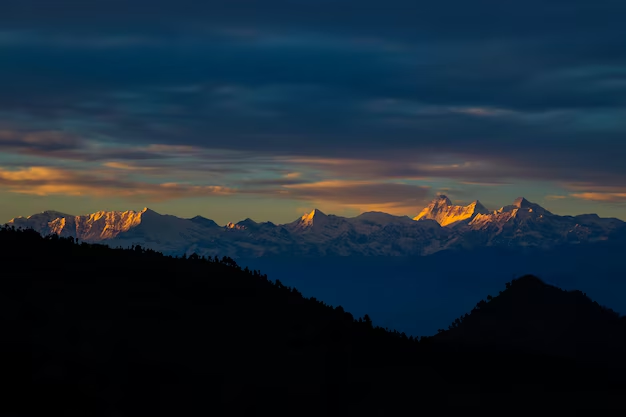
Travel tips for Far West Nepal suggest visiting Baitadi during festival seasons to enjoy local customs. The city provides a gateway to nearby natural parks and trekking areas. It remains a quiet and authentic destination for cultural travelers. Baitadi offers a deep connection to history and nature combined. It highlights the peaceful lifestyle found in many parts of the Far Western Region. The city is an important part of the region’s identity and charm.
5. Kanchanpur
Kanchanpur is known for its flatlands and proximity to national parks in Far Western Nepal. The city acts as a transportation hub connecting various parts of the region. Its economy depends on agriculture and growing trade activities. Geography of Far Western Nepal here supports fertile soil and warm weather. Visitors can access many major attractions in Far West Nepal easily from Kanchanpur. The city combines urban life with access to nature and culture
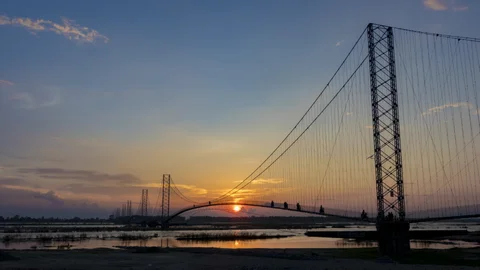
Ethnic groups in Far Western Nepal live peacefully in Kanchanpur, maintaining their traditions. Travel tips for Far West Nepal encourage exploring nearby wildlife reserves and cultural sites. The city offers markets, restaurants, and modern facilities for visitors. Kanchanpur represents the developing face of the Far Western Region. It balances economic growth with respect for local heritage. The city serves as a gateway to many hidden gems in Western Nepal.
Places to visit in Far Western Nepal
| Destination | Major Attractions |
|---|---|
| Rara | Rara Lake, Rara National Park, Talcha Airport |
| Khaptad | Khaptad National Park, Khaptad Baba Ashram, Trekking trails |
| Shuklaphanta | Shuklaphanta Wildlife Reserve, Jeep Safari, Birdwatching |
| Baitadi | Durgamandau Temple, Baitadi Sundari Temple, Local markets |
| Dhangadhi | Dhangadhi Airport, Shuklaphanta Reserve nearby, Local bazaars |
| Mahendranagar | Mahendranagar border market, Major highways, Nearby natural spots |
| Ghodaghodi | Ghodaghodi Lake, Bird Sanctuary, Community homestays |
Cultures of Far Western Region
The Far Western Nepal Travel Guide introduces you to a region rich in social and cultural diversity. The people here follow a mix of religions and caste traditions passed through generations. Hinduism remains the dominant religion in most communities. These beliefs shape local festivals, rituals, and daily lifestyles. Many places to visit in Far Western Nepal showcase religious harmony and devotion. Visitors see temples, shrines, and spiritual centers throughout the hills and plains. These sacred spaces hold deep meaning for people across castes and communities.
Caste systems still exist but show signs of change with modernization and education. Brahmin and Chhetri groups hold majority positions in many hill areas. Dalit communities live across rural and urban parts and maintain distinct traditions. The Far Western Nepal Travel Guide reveals how caste identity influences village life, marriage, and festivals.
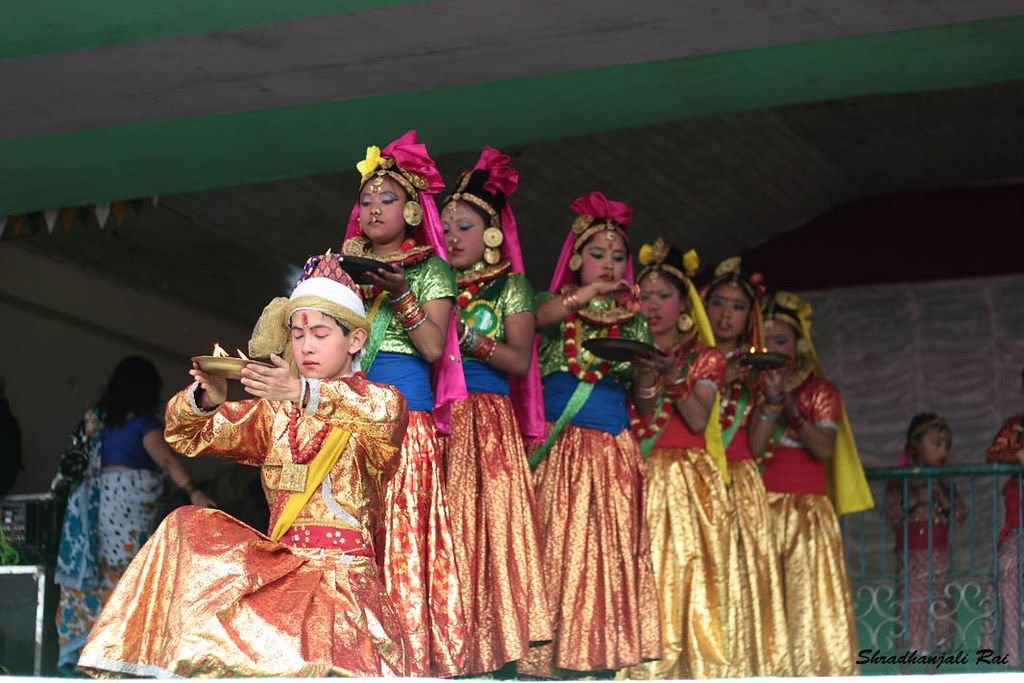


Visitors who engage respectfully learn from these cultural layers. Places to visit in Far Western Nepal often reflect these social traditions through art, dress, and worship. Caste-based occupations like tailoring, blacksmithing, and farming remain visible in daily life. Despite challenges, social inclusion efforts are slowly improving across the region.
Ethnic diversity makes this region even more vibrant and unique. The Tharu people live mostly in the Terai and hold a rich heritage of dance, food, and forest knowledge. Hill ethnic groups like the Magar and Khas have also shaped the cultures of Far Western Nepal. Each group brings distinct customs that contribute to a colorful cultural landscape. Local languages, music, and crafts reflect this ethnic mix. Visitors exploring the Far Western Nepal Travel Guide learn more by attending local events and village stays. These experiences bring deeper understanding of how communities live and share space. The mix of ethnic and religious groups makes this region culturally unforgettable.
Final Thoughts on : Far Western Region Guide
The Far Western Nepal Travel Guide offers a complete journey into a region full of life and beauty. Every destination brings you closer to nature, culture, and real Nepali traditions. The landscapes range from peaceful lakes to rugged hills and deep forests. You explore hidden corners that few tourists ever reach. Local people welcome you with warmth and pride in their heritage. This region leaves a deep impact on every traveler’s heart.
From ancient temples to national parks, each site shares a new story. The guide connects you to places to visit in Far Western Nepal and beyond. You experience diverse cultures, vibrant traditions, and untouched nature. This is not just travel — it’s connection, learning, and adventure. The Far Western Nepal Travel Guide helps you discover more than expected. It’s a must for those seeking something truly authentic in Nepal.

